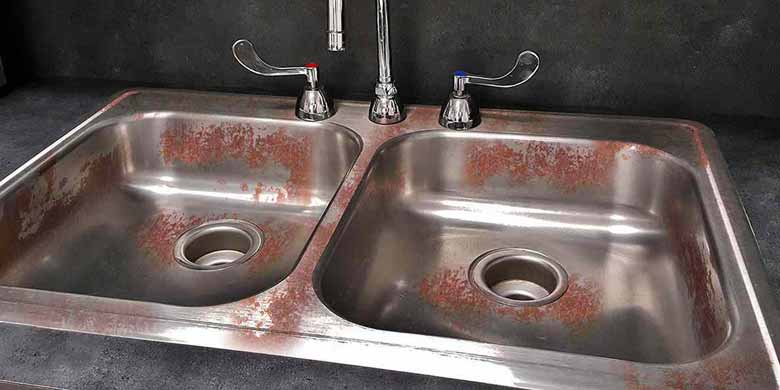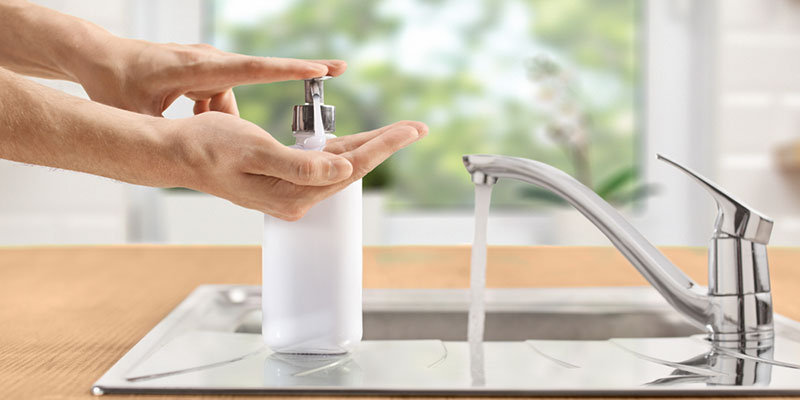How To Remove Rust From Stainless Steel Appliances

Stainless Steel Appliances
Yes, we know how it feels when your glass-looking stainless steel appliances get rust spots. But hey, if you know how to remove rust from stainless steel appliances perfectly, things will be okay again.
You may buy stainless steel thinking it doesn’t rust, right? This is what most people think because stainless steel is not that prone to rust like the other metals. However, there are some reasons why stainless steel becomes rusty.
In this article, we will talk about the reasons and remedies. Once you are at the end of the article, you will have zero confusion regarding this topic. So, let’s begin!
What Turns Your Stainless Steel Appliances to Rust?
‘Does stainless steel rust?’ is a common question because this metal is less prone to rust than the other ones. But yes, stainless steel appliances also rust sometimes for some reasons.
These appliances contain a protective layer made of chromium oxide. Your appliances will become rusty if the film breaks down. And, if you fail to take care properly, the protective layer may damage.
This is not the end, there are other culprits that turn your glass-looking stainless steel appliances rusty. Let’s face the situations when they become rusty.
- If the appliances are exposed to heat, moisture, grease, damaging materials, or saline for a long time.
- Seawater or pool water has a corrosive nature because of chlorine. So, rusts can show their face if your appliances are exposed to seawater or pool water.
- The presented amount of chromium plays a role in the stainless steel’s resistance against rust. Lacking of chromium content near the steel’s surface creates problems. And, if the top of the layer is somehow scratched off, the formation of a new layer of chromium oxide is not possible.
- If you have a habit of cleaning your stainless steel appliances with steel wool, that can create a problem. At least 12% of chromium concentration level is needed to protect your appliance from rust. But if you use steel wool for cleaning purposes, the tiny particles may remain on the surface and fall the chromium concentration level below 12%.
- Extremely high temperatures (more specifically, 750-1,550℉) can cause your appliance to become rusty.
8 Ways to Remove Rust from Stainless Steel Appliances
Here we have shared 8 useful ways to remove rust from stainless steel appliances. Without saying an extra word, let’s just get to know them.
Way 1: Vinegar Bath
Things You’ll Need
- White vinegar
- Clean cloth
- Old toothbrush
- Cup or a shallow bowl
Instructions
Starting with an easy ‘let sit & forget’ type of way. First of all, take a bowl of white vinegar and submerge the 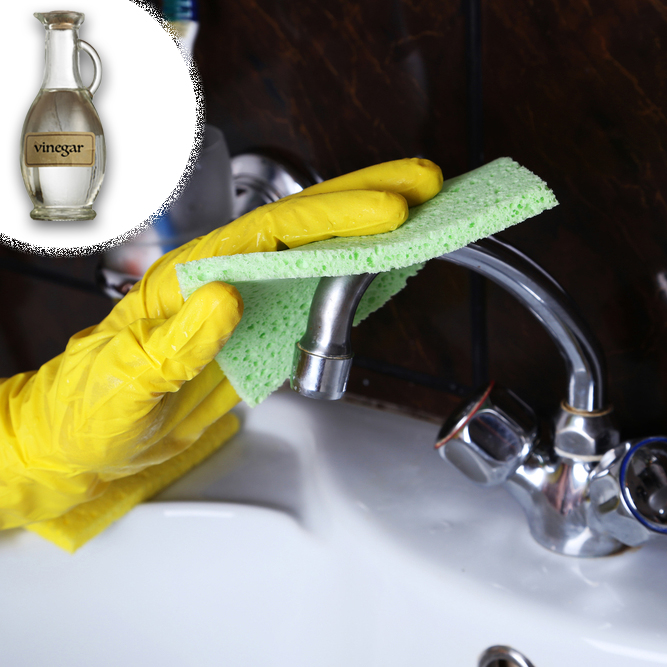 stainless steel appliance in it, if possible. But if you find the piece is too big to submerge, you can simply pour white vinegar onto the rusty areas.
stainless steel appliance in it, if possible. But if you find the piece is too big to submerge, you can simply pour white vinegar onto the rusty areas.
Wait for 5 minutes and let the white vinegar work on the rust. Then, remove the rust stains properly using the toothbrush bristles. Once done, rinse the appliance well using water and wipe it dry using a dry, clean cloth.
An additional tip for you, it’s very easy to get rid of coffee stains from a stainless steel coffee pot with vinegar. It not only removes coffee stains and smells but also helps to sanitize the coffee maker.
So, we recommend applying vinegar in order to remove coffee stains as well. Using a bottle brush to scrub the inside will make this job easier. Along with cleaning other kitchen appliances, vinegar works great for removing rust from the stainless steel vent hood as well.
Way 2: Using Baking Soda
Things You’ll Need
- Baking soda
- Warm water
- Clean cloth
- Old toothbrush
Instructions
 Using baking soda to remove rust from stainless steel appliances is one of the most useful methods. Baking soda is a mild abrasive with amazing cleaning abilities. So, if you want to remove rust from stainless steel appliances and get them looking pristine, using baking soda will work great.
Using baking soda to remove rust from stainless steel appliances is one of the most useful methods. Baking soda is a mild abrasive with amazing cleaning abilities. So, if you want to remove rust from stainless steel appliances and get them looking pristine, using baking soda will work great.
To do so, clean the rusty areas on your appliance with warm water and mild soap. Net, combine the baking soda with water and make a paste. Use a toothbrush to apply that paste on the rust spots. Gently scrub the spots and let the stains completely removed.
Once you remove all the stains, use clean water to rinse the area well and use a dry cloth to wipe it.
And, that’s that! However, this method works great for less severe rust on your stainless steel appliances.
Way 3: Using Citric Acid
Things You’ll Need
- Hot water
- Citric acid
- A large bowl
- Brush
Instructions
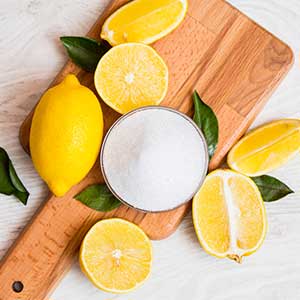 You may not have citric acid around your households, but you can easily find it at almost all health food stores. Once you purchase or manage the citric acid, go through the next steps.
You may not have citric acid around your households, but you can easily find it at almost all health food stores. Once you purchase or manage the citric acid, go through the next steps.
Take a bowl and add hot water (a few inches of the bowl) to it. Now, add 2-3 tablespoons acidic acid and submerge your stainless steel appliance in it. Leave it alone and let sit overnight.
Remove your item the next morning and scrub off the remaining rust flecks using a brush. Finally, rinse your item with water and pat dry.
This method helps to remove significant rust spots on your appliances and works like a champ. It’s another ‘let sit & forget’ method.
Way 4: Making an Use of Potato
Things You’ll Need
- Potato
- Dish soap
- Salt/baking soda
Instructions
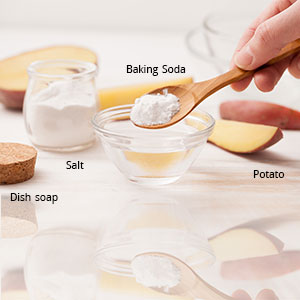 Yes, you heard us right- a potato! It may sound crazy but works like a charm. Potatoes are rich in oxalic acid that works amazing when it comes to removing rusts.
Yes, you heard us right- a potato! It may sound crazy but works like a charm. Potatoes are rich in oxalic acid that works amazing when it comes to removing rusts.
To make it happen, first of all, cut a potato in half. Then, cover the open section of your potato with dish soap. Sprinkle baking soda or salt onto the potato. Hence, baking soda/salt will act as a mild abrasive and scrape off the rust.
Next, rub the rusty areas using that potato and rinse well with water. You will see how the potato removes all the rusts. Finally, dry your appliance well.
This method is for less-stubborn and small rust stains. But it’s an easy and comparatively fast method to remove rust. However, it may create a mess, work over a sink while dealing with it to make the cleanup easier.
Way 5: Using Lemon and Salt
Things You’ll Need
- Lemon
- Salt
- Wire brush
Instructions
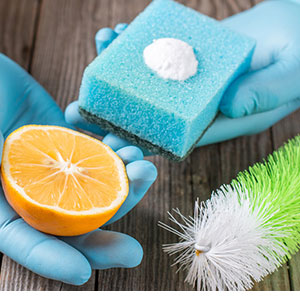 This method is a combination of the acidic nature of lemon and the abrasiveness of the salt. Coat the rusty areas with salt first.
This method is a combination of the acidic nature of lemon and the abrasiveness of the salt. Coat the rusty areas with salt first.
Then, cut a lemon in half and squeeze its juice over the coating of salt.
Now, leave it alone and let the mixture sit for approximately 2 hours. Then, use the lemon rind to scrub the rust away. But if you notice that the rust spots still remain, use a wire brush to scrub them off.
Once the rust completely disappears, rinse off the remaining lemon, salt, and rust, and pat dry.
Way 6: Using Cream of Tartar
Things You’ll Need
- 1 tablespoon cream of tartar
- ⅛ tablespoon of lemon juice
- Sponge or a soft cloth
- Dry cloth
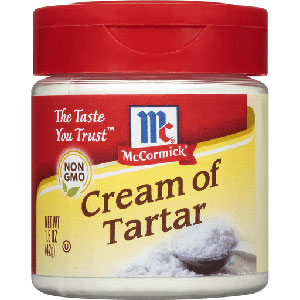
Instructions
First of all, take a bowl and mix the cream of tartar and lemon juice together. Dip the dishcloth or sponge in that mixture. Apply the mixture to all the rust spots. Scrub the rusts until all the spots lift away.
Finally, use clean water to rinse the spots and dry the appliance using a clean cloth.
Way 7: Using Oxalic Acid
Things You’ll Need
- 2 cups of oxalic acid
- Rubber gloves
- Spray bottle
- Mask or respirator
- Goggles or safety glasses
Instructions
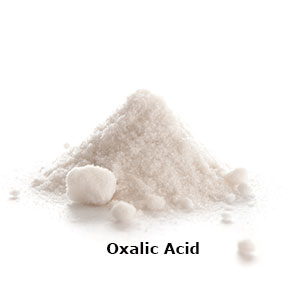 If you are looking for something that removes seriously difficult-to-clean rust spots, this method is for you. Oxalic acid naturally comes in some plants and it works amazingly in cleaning drastic rusts.
If you are looking for something that removes seriously difficult-to-clean rust spots, this method is for you. Oxalic acid naturally comes in some plants and it works amazingly in cleaning drastic rusts.
You will find oxalic acid by itself in the market. And, make sure you wear proper safety gear as well as adequate ventilation while you work with oxalic acid. Otherwise, any long-term exposure may irritate your eyes, lungs, and skin.
So, firstly, put on your safety gear properly. Take oxalic acid in a container. Spray oxalic acid to the rust thoroughly. Wait for some time and let it sit for a minute. Then, rub the appliance gently until the rust lifts away.
Rinse the surface well using clean water and dry it with a clean cloth.
Way 8: Using a Commercial Stainless Steel Cleaner
Things You’ll Need
- Stainless steel cleaner
- Mask or respirator
- Gloves
- Safety glasses or goggles
- Damp sponge
- Clean cloth
Instructions
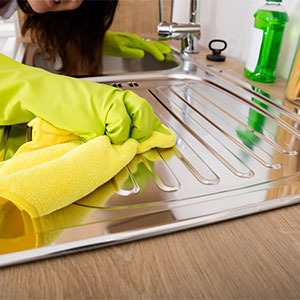 In case, all the above-mentioned processes go in vain, you need to go for a high-powered cleaner. Commercial cleaning products come with active agents that can remove the most drastic type of rust.
In case, all the above-mentioned processes go in vain, you need to go for a high-powered cleaner. Commercial cleaning products come with active agents that can remove the most drastic type of rust.
Put on your safety gear in the first place. Dampen a sponge with the cleanser (only a little amount is needed). Now, gently apply the polish to all the rust spots. Keep rubbing until the stain is completely gone.
Finally, rinse the spot using clean water and dry the area using a clean cloth.
Tips to Prevent Rust on Stainless Steel Appliances
So, what are the ways to prevent rust from the very beginning? Well, let’s see what to do.
- Try to avoid liquids (including water) in direct contact with the appliances because moisture leads to the rusting process.
- Use warm water with liquid detergents or mild cleaners to wipe down your appliances regularly. For better protection, you can apply a wax-coat afterward.
- If you are used to storing dirty appliances in your dishwashers for days or months, stop this right now. Otherwise, rust stains will bug you for sure.
- Do not soak stainless steel appliances for a long period in bleach solutions, salty water, or soapy water.
- Avoid any kind of abrasive cleaning products.
- Try not to use steel wool or sandpaper for scrubbing off the rusts. Yes, it can remove the rust for some times, but it can scratch the appliances that will leave ugly marks on their surfaces.
- Whenever you notice any discoloration, tarnish, or water stain, use adequate fresh water to rinse the appliances, and be sure you wash off all the accumulated chemicals.
- Do not let things get worse. Once you notice small rust spots, get rid of them to avoid any larger problems.
- Do not over-pack your appliances because you need to keep stainless steel appliances away from copper or silver items.
- Invest in only high-quality products.
Frequently Asked Questions
Conclusion
Alright, making sure that you have followed everything we’ve written, you certainly know how to remove rust from stainless steel appliances.
It is easy to clean and maintain your appliances if you do the job regularly. So, we suggest you not to put today’s work off for the next weekend. Keep your appliances clean and seal the chances of rusting in the future.
And, by following every instruction that we’ve mentioned, you can do the job perfectly, no doubt.
Good luck!
- How To Remove Rust From Stainless Steel Utensils
- 10 Best Stainless Steel Utensils (Relish the Dining Elegance)

